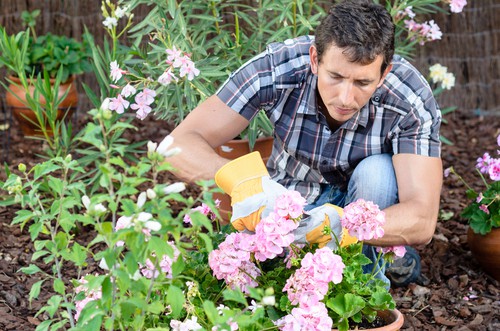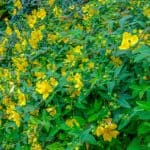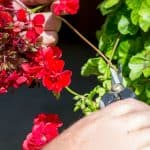Last updated on March 8th, 2022
Our site is reader supported, this means we may earn a small commission from Amazon and other affiliates when you buy through links on our site.
If you have beautiful geraniums in your garden or inside the home in pots, one of the few things you have to do to maintain its floriferous quality and promote continuous flowering is to deadhead them.
To deadhead pelargonium geraniums, hold the flower stalk that has finished flowering near the base and pull downwards. In most cases, the old bloom should snap out cleanly. Although this is the process most people use it is probably better to cut the stem with a pair of pruners or scissors instead of just pulling the spent flower off. Try both ways and decide which way works best for you.
What is deadheading?
Anyone new to the world of gardening should know that deadheading is a process by which you remove spent flowers or blooms. You have to remember that plants have a finite amount of energy that they are able to derive from their environment and that this energy gets allocated to whatever parts require it. So, if you have a flower that has reached maturity and is now on the decline unless you remove it, your geraniums will continue to allocate some of that finite energy to the spent bloom. By removing the spent blooms your plant can focus energy resources on producing new flowers.
How to deadhead geraniums to keep them flowering
In order to deadhead your geraniums, you want to first sanitise your gardening secateurs or clippers. While you can theoretically use your hands to simply break them off by pulling down on the base of the flower stem sharply, using gardening tools helps to make a very precise and clean-cut, which reduces the risk of infections or diseases and damaging other parts of the plant.
Whatever tools you use, make sure to sanitise them properly with a solution that is comprised of 9 parts water to 1 part bleach. Such a solution should be something you dip your tools into in between each plant so that you don’t transfer pests or diseases from one part of your plant to another.

With that, you simply cut the stem right below the node where you see the new growth beginning. By deadheading, you can remove older flowers so the new flowers can take their place. You want to do this in sections every few weeks so that your plant is able to remain healthy and vibrant.
Image credits – Shutterstock.com


